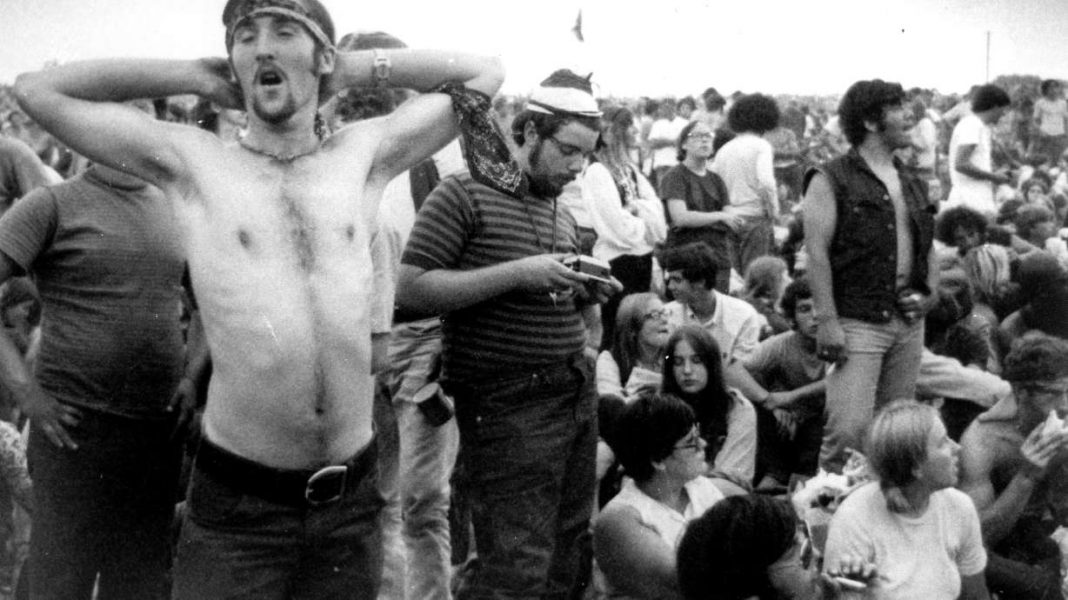BETHEL, N.Y. — The iconic Woodstock festival, a cornerstone of 1960s counterculture, didn’t actually take place in Woodstock. Instead, it was held 60 miles away in the quaint village of Bethel, New York. This geographical misnomer is fitting for an event that has evolved into a legendary symbol of a transformative era, transcending its physical location to embody the collective consciousness of a tumultuous decade.
Approximately 450,000 individuals, primarily teenagers and young adults, flocked to a parcel of land owned by dairy farmer Max Yasgur in August 1969. They were drawn by the promise of an “Aquarian Exposition” offering “three days of peace, love and music”. Today, as these attendees approach the twilight of their lives, only a small fraction of the population retains living memories of the 1960s.
Recognizing the urgency of preserving these fading memories, the Museum at Bethel Woods, situated on the festival site, has embarked on a five-year project. The aim is to separate fact from folklore and gather firsthand accounts of Woodstock before they disappear. This mission has led museum curators on a nationwide journey to document and safeguard the reminiscences of those who were there.
Music journalist Rona Elliot, 77, who has been serving as one of the museum’s “community connectors,” emphasizes the importance of capturing history from those who lived it. Elliot herself has unique insights about the festival, having worked closely with organizers like Michael Lang, who entrusted her with his archives before his passing in 2022.
Elliot describes Woodstock as “a jigsaw puzzle — a kaleidoscope of everything that transpired in the ’60s.”
While many Woodstock attendees have shared their experiences in interviews over the years, the Bethel Woods museum is delving deeper with a project initiated in 2020. The approach mirrors that of renowned historian Studs Terkel, who compiled extensive oral histories of life during the Great Depression and World War II.
Neal Hitch, senior curator and director of the Museum At Bethel Woods, explains the distinction between a casual interview and an oral history preserved in a museum. The latter requires reaching out to people in their comfort zones, encouraging them to share intimate, personal memories from their youth.
To locate and engage individuals willing to recount their Woodstock stories, the museum secured grants totaling over $235,000 from the Institute of Museum and Library Services. This funding enabled curators and community connectors like Elliot to traverse the country and record these narratives.
The journey commenced in Santa Fe, New Mexico, and has since taken the team to Florida, Ohio, and California, among other locations. They’ve visited a “Flower Power” cruise ship and a community center near the former residences of festival performers Jefferson Airplane and the Grateful Dead.
Richard Schoellhorn, 77, traveled from his home in Sebastopol, California, to share his Woodstock experience. Initially hired as a security guard, he ended up volunteering when the festival became so crowded that ticket sales were halted.
Another attendee, Akinyele Sadiq, also met with the curators in San Francisco to share his memories of watching the festival from a prime spot near the stage. His journey to and from the festival, which included hitchhiking and a ride in a converted hearse, was transformative.
So far, the curators have collected over 500 oral histories, each revealing unique, life-altering experiences. The project continues, with upcoming visits planned for Boston, New York City, New Mexico, and Southern California.
The museum plans to spend 2025 analyzing the oral histories and initiating special projects, such as reuniting friends who attended the festival together but now live apart. Elliot believes that this project is her destiny and hopes it will serve as a valuable educational resource.
“I want this to be a teaching tool,” she says. “I don’t want historians telling the story of a spiritual event that just appeared to be a musical event.”




Disagree – It’s important to preserve these stories for future generations to learn from and appreciate.